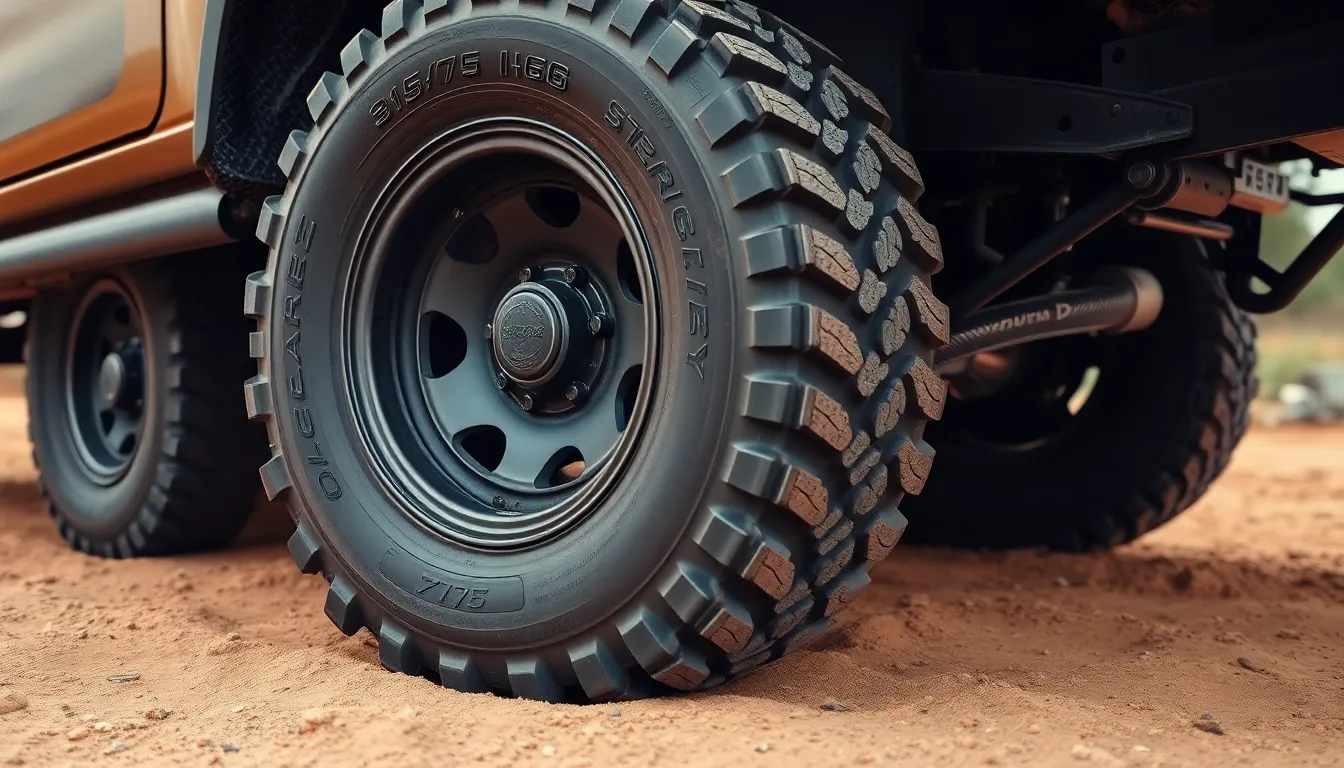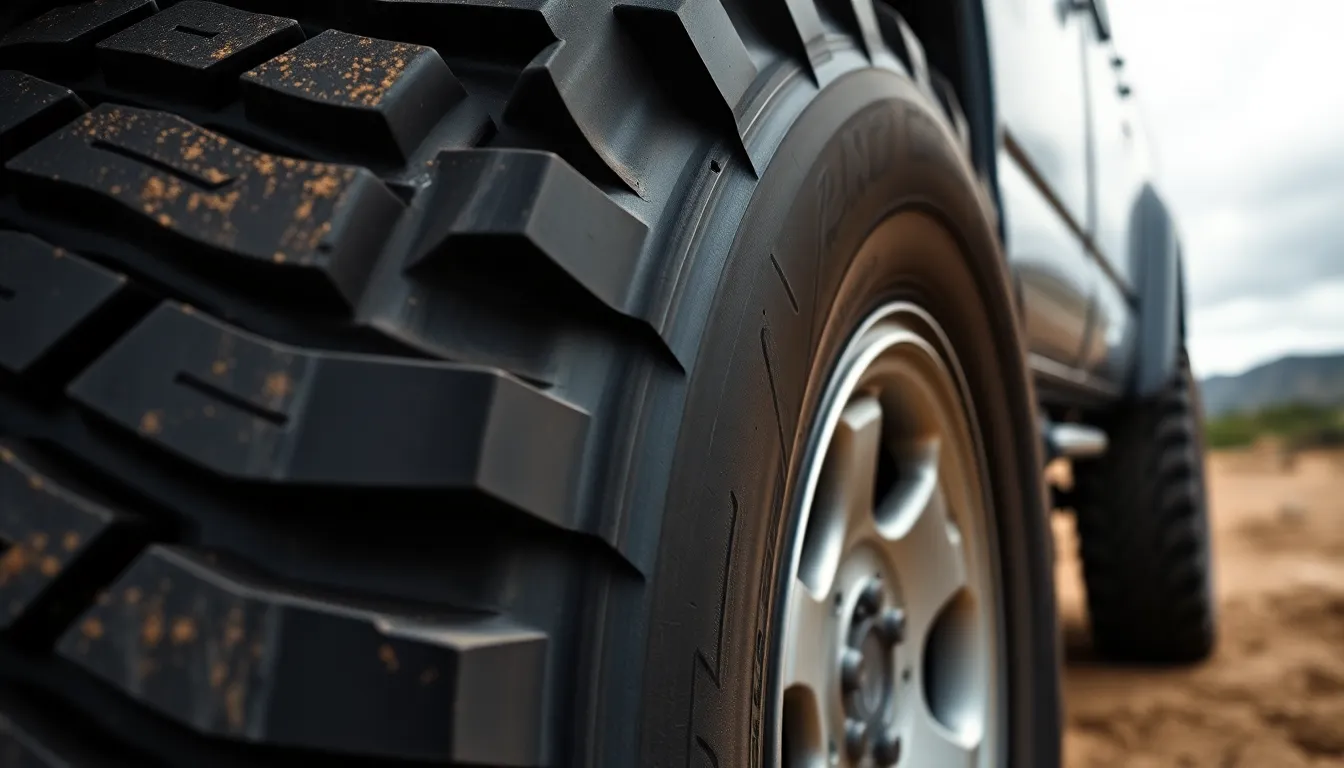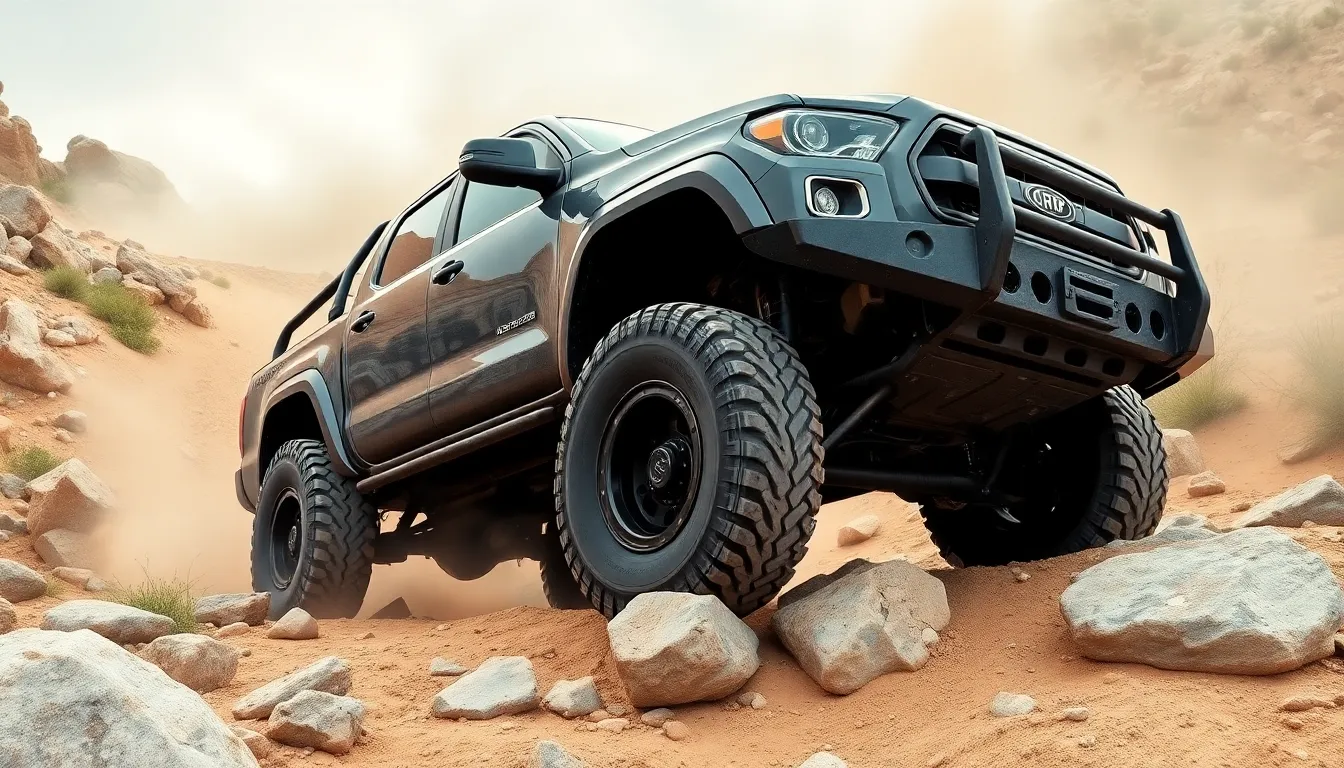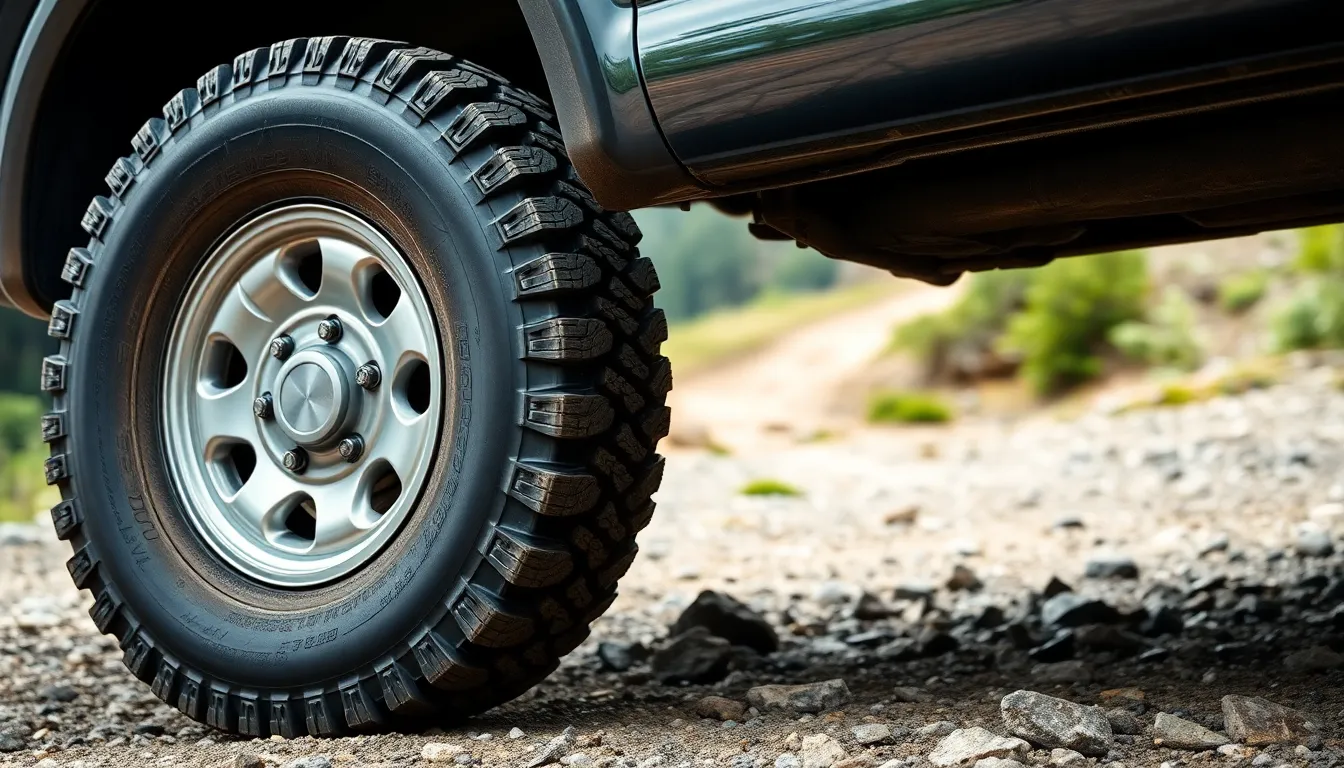Understanding 315 75 R16 tire measurements in inches can be confusing when you’re shopping for new tires. Have you ever wondered what these numbers actually mean for your vehicle’s performance and appearance?
When you see a tire size like 315/75R16, it’s expressing the tire’s width, aspect ratio, and rim diameter in a standardized format. The 315 represents the tire width in millimeters, 75 indicates the aspect ratio (height as a percentage of width), and R16 specifies a 16-inch rim diameter. Converting these measurements to inches gives you a clearer picture of how these tires will actually look and perform on your vehicle.
Understanding Tire Size: 315/75R16 Explained
Tire size designations follow a standardized format that contains crucial information about the tire’s dimensions. The 315/75R16 code breaks down into three distinct parts that each communicate exact measurements.
The first number (315) indicates the tire’s width in millimeters measured from sidewall to sidewall. At 315mm, this represents a fairly wide tire that’s approximately 12.4 inches across, providing a substantial footprint on the road.
The second number (75) represents the aspect ratio or profile, telling you the tire’s height as a percentage of its width. In this case, the sidewall height equals 75% of the 315mm width, which calculates to 236.25mm or about 9.3 inches.
The “R” in the designation stands for “radial,” referring to the tire’s construction type where the cord plies are arranged radially from the center of the tire. Radial tires represent the most common construction method used in modern vehicles due to their superior performance characteristics.
The final number (16) specifies the wheel diameter in inches, meaning these tires fit on 16-inch wheels. This measurement refers to the diameter of the wheel from one end to the other passing through the center.
Breaking Down the 315/75R16 Tire Size Measurements

The 315/75R16 tire size contains exact measurements that directly impact your vehicle’s performance and appearance. Understanding these numbers and letters helps you make informed decisions about tire replacement or upgrades.
What the Numbers and Letters Mean
Each component of the 315/75R16 designation represents a exact dimension of your tire:
- 315 indicates the tire width in millimeters measured from sidewall to sidewall. At 315mm (12.4 inches), these tires offer a substantial footprint on the road, providing excellent stability and traction.
- 75 represents the aspect ratio or profile – the tire’s sidewall height as a percentage of its width. In this case, the sidewall height equals 75% of 315mm, resulting in a 236.25mm (9.3 inches) tall sidewall.
- R stands for Radial construction, the standard tire construction method where the cord plies are arranged radially from the center of the tire. Radial tires deliver better road contact, heat dissipation, and longevity compared to older bias-ply designs.
- 16 specifies the wheel diameter in inches, meaning these tires fit on 16-inch wheels.
Calculating 315/75R16 in Inches
Converting the metric measurements to inches provides a clearer picture of the tire’s actual size:
| Dimension | Calculation | Result |
|---|---|---|
| Width | 315mm ÷ 25.4 | 12.4 inches |
| Sidewall Height | 12.4 × 0.75 | 9.3 inches |
| Total Diameter | 16 + (2 × 9.3) | 34.6 inches |
| Circumference | 34.6 × π | 108.7 inches |
| Revolutions per Mile | 63,360 ÷ 108.7 | 583 |
The total diameter of 34.6 inches makes this a fairly tall tire, suitable for off-road vehicles and trucks. These tires typically mount on wheels between 8 and 11 inches wide, with the optimal wheel width depending on your exact application and driving conditions.
The Exact Dimensions of a 315/75R16 Tire

A 315/75R16 tire has exact measurements that translate from metric to imperial units. Understanding these exact dimensions helps when selecting tires for your vehicle or making performance calculations.
Overall Diameter in Inches
The overall diameter of a 315/75R16 tire measures approximately 34.6 inches from one end to the other. This measurement represents the total height of the tire from the ground to the top when mounted on a vehicle. With a circumference of roughly 108.6 inches, these tires complete about 583 revolutions per mile. The substantial diameter makes these tires particularly suitable for trucks and SUVs that require increased ground clearance for off-road driving conditions.
Section Width in Inches
The section width of a 315/75R16 tire equals 12.4 inches (315 millimeters). This dimension represents the tire’s width at its widest point when properly mounted on a rim. These tires typically fit on rims between 8 to 11 inches wide, with the optimal width depending on your exact application. The generous width provides excellent stability and traction, especially beneficial for vehicles carrying heavy loads or traversing challenging terrain.
Sidewall Height in Inches
The sidewall height of a 315/75R16 tire reaches approximately 9.3 inches. This measurement comes from the aspect ratio (75), indicating the sidewall height equals 75% of the section width. The formula calculates as: 315mm × 0.75 ÷ 25.4 = 9.3 inches. Taller sidewalls offer better absorption of road imperfections and increased off-road capability by allowing more tire flex when handling obstacles. The substantial sidewall also provides added protection for your rims when driving over rough surfaces.
| Specification | Inches | Millimeters |
|---|---|---|
| Overall Diameter | 34.6″ | 878 mm |
| Section Width | 12.4″ | 315 mm |
| Sidewall Height | 9.3″ | 236 mm |
| Wheel Diameter | 16″ | 406.4 mm |
| Circumference | 108.6″ | 2756.9 mm |
Common Vehicles That Use 315/75R16 Tires

The 315/75R16 tire size appears frequently on larger trucks and SUVs designed for enhanced traction, substantial load capacity, and superior off-road performance. Full-size pickup trucks represent the most common application for these tires, particularly heavy-duty models like the Ford F-250/F-350 Super Duty, RAM 2500/3500, and Chevrolet Silverado 2500/3500 HD series. These vehicles benefit from the 12.4-inch width and 34.6-inch overall diameter when tackling challenging terrain or hauling heavy loads.
Heavy-duty SUVs also use this tire size extensively, with popular examples including the Toyota Land Cruiser, Nissan Armada, and certain Jeep Wrangler builds. Off-road enthusiasts often select this size when upgrading their vehicles for improved ground clearance and obstacle navigation. The 9.3-inch sidewall height provides excellent shock absorption when traversing rocks, ruts, and uneven surfaces.
Many owners choose 315/75R16 tires as aftermarket upgrades from stock sizes, seeking improved performance without requiring wheel replacement. This size strikes an optimal balance between width and sidewall height while still fitting standard 16-inch rims. The 108.7-inch circumference offers superior traction in mud, snow, and loose surfaces compared to smaller stock tires, making it a practical choice for vehicles that regularly encounter adverse conditions.
| Vehicle Type | Popular Models |
|---|---|
| Heavy-Duty Trucks | Ford F-250/F-350, RAM 2500/3500, Chevrolet Silverado 2500/3500 |
| Off-Road SUVs | Toyota Land Cruiser, Nissan Armada, Jeep Wrangler |
| Modified 4x4s | Custom builds and upgraded stock vehicles |
Comparing 315/75R16 to Other Popular Tire Sizes

The 315/75R16 tire size represents a exact dimensional profile that affects vehicle performance differently than other common sizes. Comparing this size to alternatives helps you understand the practical implications of your tire choice for your vehicle.
Speedometer Accuracy When Switching Sizes
Tire diameter directly impacts your vehicle’s speedometer readings because it changes the distance traveled per revolution. When upgrading from a smaller tire like the 285/75R16 to the 315/75R16, your speedometer will read approximately 5.1% slower than your actual speed due to the increased circumference. This happens because larger tires cover more ground with each rotation, causing your vehicle’s computer to underestimate your true speed. Conversely, downsizing to smaller tires makes your speedometer read faster than you’re actually traveling. For instance, the 285/75R16 tire is about 1.77 inches smaller in diameter than the 315/75R16, creating a noticeable difference in both ground clearance and speedometer accuracy.
The circumference difference between these tire sizes significantly affects real-industry driving. At a speedometer reading of 60 mph with 315/75R16 tires, you’re actually traveling closer to 63 mph if your vehicle was originally calibrated for 285/75R16 tires. This discrepancy can lead to unintentional speeding and potentially affect fuel economy calculations. Many off-road enthusiasts accept this trade-off for the improved ground clearance and traction that comes with the larger 34.6-inch overall diameter of the 315/75R16 tire.
Benefits and Drawbacks of 315/75R16 Tires

Benefits of 315/75R16 Tires
315/75R16 tires offer exceptional ground clearance thanks to their 34.6-inch diameter, making them ideal for off-road adventures. Their substantial 12.4-inch width creates a larger contact patch with the ground, significantly improving traction and stability on challenging terrains. The generous 9.3-inch sidewall height provides superior cushioning and shock absorption when traveling over rocks, ruts, and other obstacles.
These tires’ versatility makes them perfect for trucks, SUVs, and dedicated off-road vehicles that require robust performance in demanding conditions. Many manufacturers produce this common size, giving you many options from budget-friendly to premium tire selections. The balanced dimensions deliver an optimal combination of performance characteristics that work exceptionally well for both highway driving and off-road excursions.
Drawbacks of 315/75R16 Tires
Fuel efficiency decreases with 315/75R16 tires due to their increased rolling resistance compared to smaller tire options. The larger diameter affects your vehicle’s speedometer accuracy, causing it to under-read your actual speed by approximately 5% compared to smaller sizes like the 285/75R16.
These tires require exact fitment considerations, as they’re typically approved for wheel widths between 8 to 11 inches and may need compatible rims for proper installation. Vehicle modifications might be necessary, including lift kits or fender adjustments, to accommodate these larger tires without rubbing issues. The ride quality can feel slightly stiffer than stock tires, especially on paved roads, though this trade-off is generally accepted for the improved off-road capability they provide.
Conclusion
Understanding the 315/75R16 tire size gives you valuable insights for your vehicle upgrades. At 34.6 inches in diameter and 12.4 inches wide these tires offer substantial ground clearance and excellent traction for trucks and SUVs.
While they provide superior off-road performance and stability you’ll need to consider the trade-offs including potential fuel economy impacts and speedometer adjustments. The 9.3-inch sidewall height balances comfort with responsiveness.
Whether you’re tackling challenging terrain or carrying heavy loads these tires deliver reliable performance for vehicles like Ford F-Series Super Duty trucks and off-road capable SUVs. With this knowledge you can make confident decisions about whether 315/75R16 tires are the right fit for your exact driving needs.
Frequently Asked Questions
What does the 315 in 315/75R16 tire size mean?
The 315 in a tire size designation refers to the tire’s width in millimeters. For a 315/75R16 tire, this equals approximately 12.4 inches. This measurement indicates a fairly wide tire that provides substantial road contact, offering good stability and traction, especially for larger vehicles like trucks and SUVs.
What does the 75 represent in the tire size?
The 75 represents the aspect ratio, which is the tire’s height as a percentage of its width. For a 315/75R16 tire, the sidewall height is 75% of the 315mm width, calculating to about 9.3 inches. This relatively tall sidewall provides good cushioning over rough terrain and enhances off-road capabilities.
What does the “R” stand for in tire sizing?
The “R” stands for Radial construction, which is the most common type of tire construction used in modern vehicles. Radial tires have cord plies arranged at 90 degrees to the direction of travel, providing better fuel economy, longer tread life, and improved handling compared to older bias-ply tire designs.
What vehicles typically use 315/75R16 tires?
315/75R16 tires are commonly used on full-size pickup trucks (Ford F-250/F-350, RAM 2500/3500, Chevrolet Silverado 2500/3500 HD), heavy-duty SUVs (Toyota Land Cruiser, Nissan Armada), and some Jeep Wrangler models. These tires are particularly popular for off-road applications and as aftermarket upgrades for vehicles that require enhanced traction and load capacity.
What is the total diameter of a 315/75R16 tire?
A 315/75R16 tire has a total diameter of approximately 34.6 inches. This measurement includes both the tire and the wheel when mounted. The large diameter provides excellent ground clearance, making these tires ideal for off-road driving and navigating over obstacles.
How does a 315/75R16 tire affect fuel economy?
315/75R16 tires typically decrease fuel economy due to their larger size and increased rolling resistance. The wider footprint creates more friction with the road, requiring more engine power to maintain speed. Most users can expect a 1-3 mpg reduction compared to stock tire sizes, though this varies based on driving habits and vehicle type.
Will 315/75R16 tires affect my speedometer reading?
Yes, installing 315/75R16 tires will affect your speedometer if they’re larger than your original tires. With these tires, your speedometer will typically read approximately 5% slower than your actual speed. For example, when your speedometer shows 60 mph, you might actually be traveling at about 63 mph. This discrepancy should be considered for safe driving.
Do I need to modify my vehicle to fit 315/75R16 tires?
Many vehicles require modifications to properly fit 315/75R16 tires, especially if upgrading from smaller stock sizes. Common modifications include lift kits (typically 2-3 inches), wheel well trimming, and possibly wheel spacers or wheels with different offsets. Always consult with a tire professional to determine the specific requirements for your vehicle.
What is the load capacity of 315/75R16 tires?
The load capacity of 315/75R16 tires varies by brand and specific model, but most can carry between 3,000-3,750 pounds per tire. This makes them suitable for heavy-duty applications like towing and hauling. Always check the tire’s load index (typically found on the sidewall) to confirm it meets your vehicle’s requirements.
Are 315/75R16 tires good for off-roading?
Yes, 315/75R16 tires excel in off-road environments. Their wide footprint (12.4 inches) provides excellent traction on loose surfaces like mud, sand, and gravel. The tall sidewalls (9.3 inches) help absorb impacts from rough terrain and allow for air-down driving techniques. Most off-road enthusiasts choose these tires specifically for their performance in challenging conditions.
